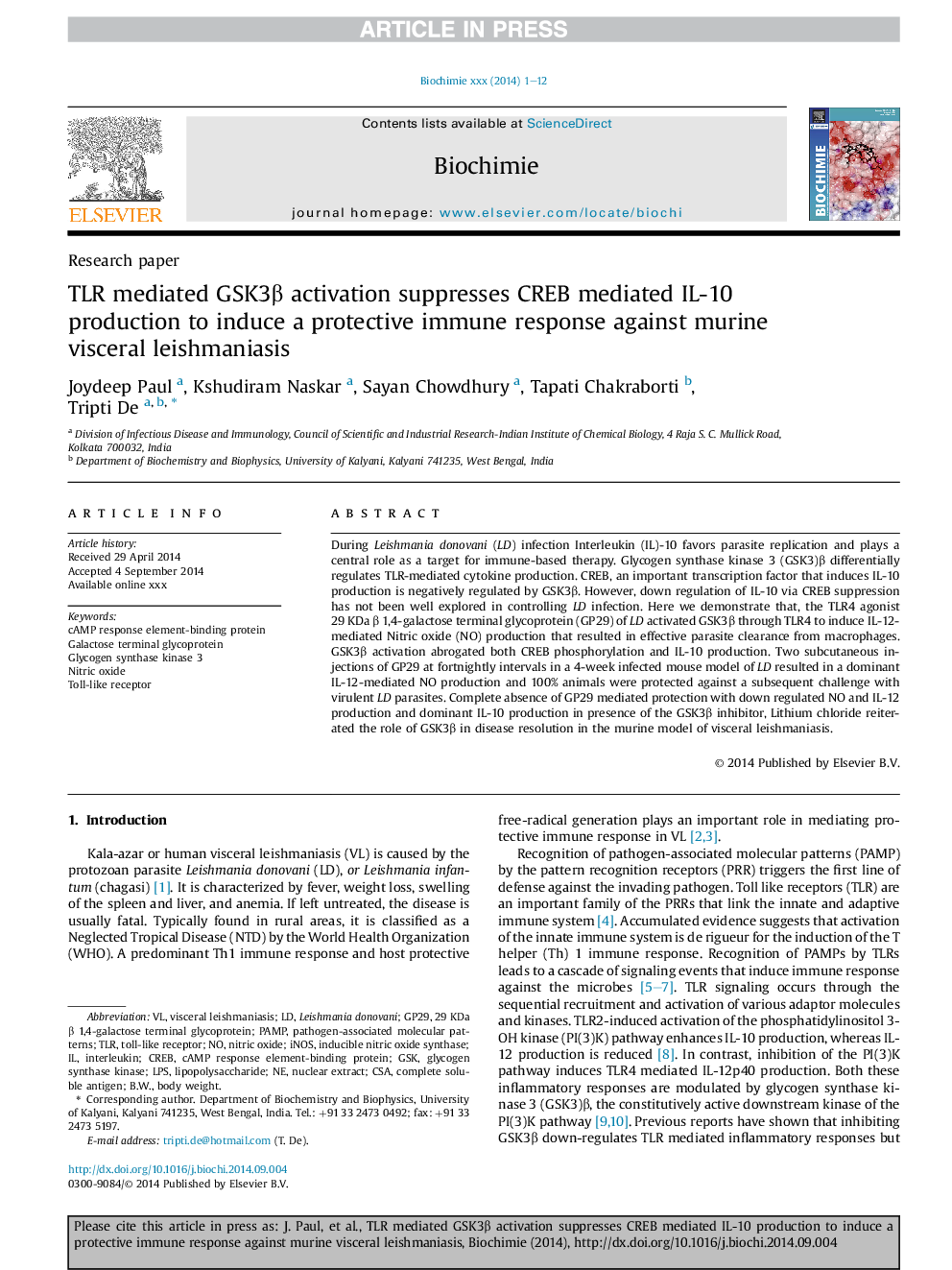| Article ID | Journal | Published Year | Pages | File Type |
|---|---|---|---|---|
| 10803606 | Biochimie | 2014 | 12 Pages |
Abstract
During Leishmania donovani (LD) infection Interleukin (IL)-10 favors parasite replication and plays a central role as a target for immune-based therapy. Glycogen synthase kinase 3 (GSK3)β differentially regulates TLR-mediated cytokine production. CREB, an important transcription factor that induces IL-10 production is negatively regulated by GSK3β. However, down regulation of IL-10 via CREB suppression has not been well explored in controlling LD infection. Here we demonstrate that, the TLR4 agonist 29 KDa β 1,4-galactose terminal glycoprotein (GP29) of LD activated GSK3β through TLR4 to induce IL-12-mediated Nitric oxide (NO) production that resulted in effective parasite clearance from macrophages. GSK3β activation abrogated both CREB phosphorylation and IL-10 production. Two subcutaneous injections of GP29 at fortnightly intervals in a 4-week infected mouse model of LD resulted in a dominant IL-12-mediated NO production and 100% animals were protected against a subsequent challenge with virulent LD parasites. Complete absence of GP29 mediated protection with down regulated NO and IL-12 production and dominant IL-10 production in presence of the GSK3β inhibitor, Lithium chloride reiterated the role of GSK3β in disease resolution in the murine model of visceral leishmaniasis.
Keywords
CREBGSKLPSTLRPAMPiNOSb.w.pathogen-associated molecular patternsCSAinterleukinToll-like receptorinducible nitric oxide synthasenuclear extractLeishmania donovaniVisceral leishmaniasislipopolysaccharideNitric oxidebody weightcAMP response element-binding proteinglycogen synthase kinase 3glycogen synthase kinase
Related Topics
Life Sciences
Biochemistry, Genetics and Molecular Biology
Biochemistry
Authors
Joydeep Paul, Kshudiram Naskar, Sayan Chowdhury, Tapati Chakraborti, Tripti De,
